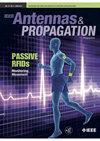Performance Benchmarking With the Austin RCS Benchmark Suite: Beyond empirical verification and validation
IF 5.7
4区 计算机科学
Q2 ENGINEERING, ELECTRICAL & ELECTRONIC
引用次数: 0
Abstract
The realized performance (error–cost tradeoff) of three computational electromagnetic (CEM) methods, which use parallel algorithms on a supercomputer to predict the radar cross section (RCS) of complex targets, are quantified using the Austin RCS Benchmark Suite. The article demonstrates how modern benchmark suites can be used to evaluate CEM methods empirically and compare their performances objectively.The Austin RCS Benchmark Suite
使用奥斯汀 RCS 基准套件进行性能基准测试:超越经验验证和确认
利用Austin RCS Benchmark Suite,对在超级计算机上使用并行算法预测复杂目标雷达截面(RCS)的三种计算电磁(CEM)方法的实现性能(误差成本权衡)进行了量化。本文演示了如何使用现代基准套件对CEM方法进行经验评估并客观地比较它们的性能。Austin RCS基准测试套件[1],[2]最近填充了20个精心挑选的问题集,这些问题集在计算难度[3]的六个维度上跨越了广泛的范围。
本文章由计算机程序翻译,如有差异,请以英文原文为准。
求助全文
约1分钟内获得全文
求助全文
来源期刊

IEEE Antennas and Propagation Magazine
工程技术-工程:电子与电气
CiteScore
7.00
自引率
5.70%
发文量
186
审稿时长
3 months
期刊介绍:
IEEE Antennas and Propagation Magazine actively solicits feature articles that describe engineering activities taking place in industry, government, and universities. All feature articles are subject to peer review. Emphasis is placed on providing the reader with a general understanding of either a particular subject or of the technical challenges being addressed by various organizations, as well as their capabilities to cope with these challenges. Articles presenting new results, review, tutorial, and historical articles are welcome, as are articles describing examples of good engineering. The technical field of interest of the Magazine is the same as the IEEE Antennas and Propagation Society, and includes the following: antennas, including analysis, design, development, measurement, and testing; radiation, propagation, and the interaction of electromagnetic waves with discrete and continuous media; and applications and systems pertinent to antennas, propagation, and sensing, such as applied optics, millimeter- and sub-millimeter-wave techniques, antenna signal processing and control, radio astronomy, and propagation and radiation aspects of terrestrial and space-based communication, including wireless, mobile, satellite, and telecommunications.
 求助内容:
求助内容: 应助结果提醒方式:
应助结果提醒方式:


